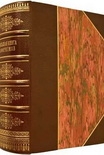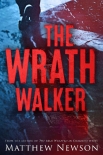It's the End of the World : But What Are We Really Afraid Of? (9781783964758) Roberts, Adam (mobi ebook reader txt) 📖

Book online «It's the End of the World : But What Are We Really Afraid Of? (9781783964758) Roberts, Adam (mobi ebook reader txt) 📖». Author Roberts, Adam
Not every story allows a loophole for the righteous. Norse myths of the end of the world tell a story that includes both gods and men in the coming disaster, something which neither can escape. It’s also a flood, of sorts – an apocalypse of ice. According to this legend-arium, Odin, the leader of the Norse gods, knows that one day soon the universe will come to an end. By way of preparing for this grim fate, he assembles an army of the bravest warriors – those who die valiantly in battle are collected by Odin’s Valkyries and entertained at a feast in the halls of Valhalla. Odin wants these warriors on hand and ready to fight when the end times come: when giants, monsters and the huge sky wolf Fenrir will attack. At that time, Odin and his warriors will fight. They will not win, but that is not the point. Odin is well aware that they will lose, that Thor will be killed by the poisonous Midgard Serpent, that Odin’s wife Frey will be killed by the fire monster Surt, and that Odin himself will be devoured by Fenrir. The sun will turn black, the stars will disappear, the earth will sink into the sea, steam will rise and flames will burn the heavens. People will flee in terror, though they are doomed wherever they go. What matters is not that we will lose, but how we lose – and that we go down fighting. It degrades one’s dignity, according to Norse culture, to whine about suffering or reverses. They are inevitable. What matters is not that they happen, but how much defiance we can face them with, both in life and in death.
It is strangely fitting that this account of the inevitable death of the universe was almost lost to us. These stories, once passed about as the oral culture of early Scandinavians, had entirely died out by the Renaissance – there is no mention of them in any of Shakespeare’s plays, for instance. But then in 1662, a bishop called Brynjólfur Sveinsson happened to come across a manuscript, written in Old Norse, in an Icelandic farmhouse. If this bundle of papers had been burnt, eaten by mice or otherwise discarded, we would have almost no connection to the old Viking myths. Since Iceland at this time belonged to Denmark, Brynjólfur donated the manuscript to the Royal Library in Copenhagen, where it gathered dust for several centuries. Only in the nineteenth century, with the chance discovery of an ancient Icelandic manuscript, did interest in Norse mythology bring this material back into popular consciousness. It was, as Tom Shippey says, a dead tradition before then, although he notes that ‘Things are very different these days, now that one-eyed Odins, trickster Lokis and hammer-wielding Thors are fantasy and comic-book clichés.’
Why have these stories broken out of their academic and antiquarian milieu? One secret of their appeal is surely that, in a manner which has always been seen as typically Anglo-Scandinavian, they are deeply gloomy, in a cheerful sort of way. The most striking aspect of Norse mythology is that it is fundamentally hopeless.*
This fundamental hopelessness is important because it grounds the cheerfulness. We can all agree that when disaster looms, despair is a debilitating and counterproductive reaction. What is more contentious is that hope is not much better; it’s the hope that generates the anxiety, the tension, that fills you with the terror of uncertainty. It is much better, psychologically as well as practically, to greet the impending disastrousness with a cheerful hopelessness. After all: we are all doomed. Everybody dies. There are no exceptions, and it demeans us to deny that fact. The only thing that matters is the courage with which we encounter our inevitable fate.
But then there’s one final wrinkle: after all has been lost, there will be a new beginning. The first section of Snorri Sturluson’s thirteenth-century Prose Edda, the Gylfaginning, contains a detailed account of Ragnarök that moves its story beyond the death of the sun, the devastation of the world, the sea flooding the earth and the sky splitting in two. But ‘what comes after the sky and the whole world are burned? After all the gods are dead, and all the world’s bravest warriors and the whole of humankind?’ The sun’s daughter will take her parent’s place in the sky; the world will come back to life and two humans whom the gods had hidden away during Ragnarök will emerge: a Norse Adam and Eve called Lif and Lifthrasir. ‘They feed on the morning dew,’ the Gylfaginning tells us. ‘From these so numerous a race is descended that they fill the whole world with people.’
The end turns out not to be the end – Ragnarök turns the universe off and on again. We still can’t bring ourselves to come to terms with the total absence of life. Something must continue, something must exist. And so we’re locked into a cycle – imagining an end to the story, but afraid to really bring it to an end once and for all. This, counter-intuitively, turns out to be one of the most reliable features of all the stories about the end of the world. A world ends. The world never does.
The Hopi peoples, indigenous to North America and now concentrated in the Hopi Reservation in Arizona, believe that our world is the fourth made by Tawa, their sun spirit creator god. In the first world, things went well initially, but then human beings




Comments (0)